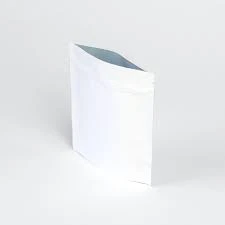- Afrikaans
- Albanian
- Amharic
- Arabic
- Armenian
- Azerbaijani
- Basque
- Belarusian
- Bengali
- Bosnian
- Bulgarian
- Catalan
- Cebuano
- chinese_simplified
- chinese_traditional
- Corsican
- Croatian
- Czech
- Danish
- Dutch
- English
- Esperanto
- Estonian
- Finnish
- French
- Frisian
- Galician
- Georgian
- German
- Greek
- Gujarati
- haitian_creole
- hausa
- hawaiian
- Hebrew
- Hindi
- Miao
- Hungarian
- Icelandic
- igbo
- Indonesian
- irish
- Italian
- Japanese
- Javanese
- Kannada
- kazakh
- Khmer
- Rwandese
- Korean
- Kurdish
- Kyrgyz
- Lao
- Latin
- Latvian
- Lithuanian
- Luxembourgish
- Macedonian
- Malgashi
- Malay
- Malayalam
- Maltese
- Maori
- Marathi
- Mongolian
- Myanmar
- Nepali
- Norwegian
- Norwegian
- Occitan
- Pashto
- Persian
- Polish
- Portuguese
- Punjabi
- Romanian
- Russian
- Samoan
- scottish-gaelic
- Serbian
- Sesotho
- Shona
- Sindhi
- Sinhala
- Slovak
- Slovenian
- Somali
- Spanish
- Sundanese
- Swahili
- Swedish
- Tagalog
- Tajik
- Tamil
- Tatar
- Telugu
- Thai
- Turkish
- Turkmen
- Ukrainian
- Urdu
- Uighur
- Uzbek
- Vietnamese
- Welsh
- Bantu
- Yiddish
- Yoruba
- Zulu
sustainable glass packaging
Sustainable Glass Packaging A Path Towards an Eco-Friendly Future
In recent years, the global conversation around sustainability has intensified, prompting industries to evaluate their practices in an attempt to minimize their environmental impact. One area that has garnered significant attention is packaging, particularly glass packaging, which is revered for its potential as a sustainable material. This article explores the benefits of sustainable glass packaging, its implications for the environment, and its role in the broader context of sustainability.
The Benefits of Glass Packaging
Glass packaging is an excellent choice for a variety of reasons. Firstly, it is highly recyclable. Unlike many other materials, glass can be recycled indefinitely without losing its quality or purity. This means that glass containers can be returned to the production cycle repeatedly, significantly reducing the need for raw materials and energy consumption. The recycling process for glass not only conserves these resources but also reduces greenhouse gas emissions compared to producing new glass from raw materials.
Secondly, glass packaging is inert, meaning that it does not leach harmful chemicals into its contents. This property makes glass an ideal choice for food and beverage containers, ensuring that consumers can enjoy their products without the risk of chemical contamination. In contrast, some plastic packaging can release harmful compounds, especially when exposed to heat or chemicals, posing significant health risks.
Moreover, glass is an excellent barrier against oxygen, moisture, and other external factors, which helps preserve the quality and freshness of products. This is particularly important for food manufacturers as it extends the shelf life of their products, reduces food waste, and minimizes spoilage. By preserving food and beverages effectively, glass packaging supports both sustainability and public health.
Environmental Impact of Glass Recycling
The environmental benefits of glass recycling are substantial. According to estimates, recycling one ton of glass can save over 1,000 kilograms of raw materials, nearly 600 kilograms of carbon dioxide emissions, and more than 1.5 tons of natural resources. Furthermore, producing glass from recycled materials requires significantly less energy compared to producing it from raw materials. This energy efficiency is a crucial factor in reducing the overall carbon footprint of glass production.
sustainable glass packaging

However, to harness these benefits, it is essential to ensure an efficient recycling system. Many regions struggle with low glass recycling rates due to a lack of proper collection systems, consumer awareness, and investment in recycling infrastructure. As consumers become more environmentally conscious, it becomes imperative for governments and organizations to enhance these systems, ensuring that glass is collected, processed, and recycled effectively.
The Role of Innovation in Sustainable Glass Packaging
Innovation plays a pivotal role in the sustainability of glass packaging. Advances in manufacturing techniques have led to lighter and more durable glass containers that reduce material usage without compromising quality. Additionally, alternative designs are emerging that utilize less glass while maintaining the functionality and aesthetic appeal that consumers desire.
Companies are also exploring creative ways to encourage the use of glass packaging. For instance, initiatives that promote refillable glass containers, where consumers can return used containers to be cleaned and re-filled, are gaining traction. This practice not only reduces waste but also fosters a circular economy, where materials are continuously reused and recycled.
Conclusion Embracing a Sustainable Future
As the world grapples with the challenges of climate change, increased waste production, and resource depletion, sustainable glass packaging presents a viable solution. Through its recyclability, safety, and preservation capabilities, glass packaging stands out as an environmentally friendly choice. It is not merely a trend but rather a fundamental shift towards a more sustainable future.
To fully realize the potential of glass packaging, collaboration among manufacturers, governments, and consumers is crucial. Increased consumer awareness and participation in recycling programs can significantly enhance glass recycling rates. Simultaneously, investment in recycling infrastructure and innovative packaging solutions will pave the way for a greener tomorrow.
In conclusion, sustainable glass packaging encapsulates a commitment to environmental stewardship, health, and sustainability. As we navigate an increasingly complex ecological landscape, embracing glass packaging is not just an option; it is a responsibility we owe to future generations. By opting for glass, we pave the way for a sustainable packaging revolution that protects the planet while offering safe, high-quality products for consumers worldwide.













